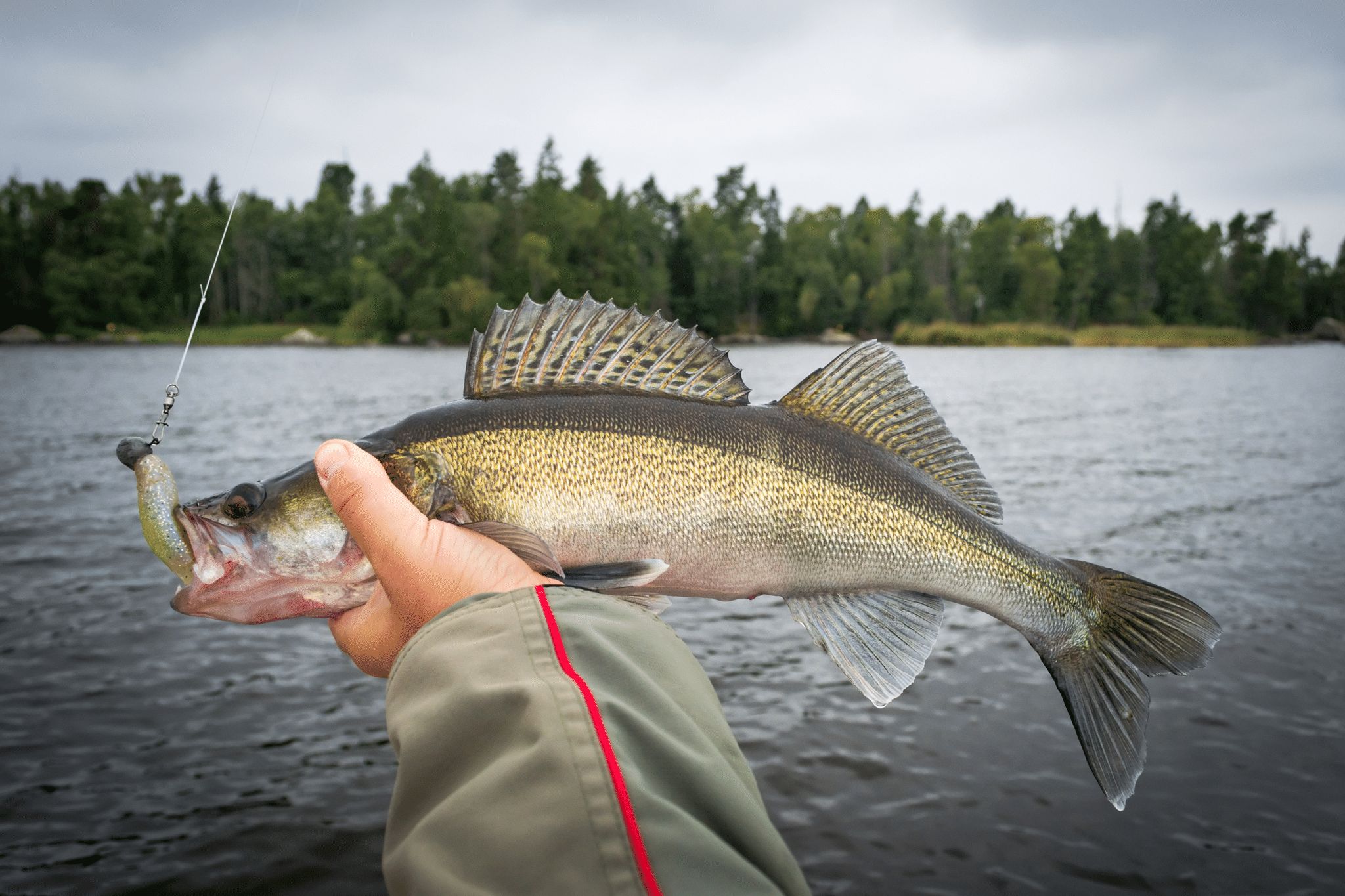Open Water Fishing in March

Open Water Fishing in March
The month of March is characterized by rapidly rising daily high temperatures, with daily highs increasing from 41°Fto 56°F over the course of the month, exceeding 72°F or dropping below 26°F only one day in ten. As temps rise throughout the area, ice will begin to lose its grip on area lakes. Walleye are among the first when it comes to transitions. As water warms and days grow longer, walleye will move from their wintering areas to shallow spawning beds.
Walleye will start spawning when the water temperature reaches 42 – 54 degrees. While active spawning is not likely in March, these fish will begin to move to shallow haunts in preparation for the spawn. They will be shallow compared to late winter and later during the open water season. Walleye can be readily caught from shore, and they explore spawning areas in shallow water.
Northern pike will also transition to shallower water in search of spawning beds. Migrations into spawning areas for these fish will occur at night when water temps are between 34 and 40 degrees, but 36 – 37 seems to be the preferred range. As March gives way to April and warmer temperatures, muskies, crappies, and bass will soon make their transitions to shallow areas in search of spawning beds.
Where to Go
Warming water temps mean one thing, as we’ve already alluded to…shallow walleye. This is an excellent time of year when anglers can target these fish from shore. Storm Lake, for example, is a popular destination for chasing after walleye. Shore access is easy, and anglers can wade out and pitch a jig/minnow combination with great success.
Big Creek Lake in Central Iowa is also a great destination for early walleye fishing. Thanks to the Iowa DNR’s efforts to improve the walleye and muskie fishing in this lake, we see an increase in trophy catches and numbers each year. Again, these fish will be shallow, so shore fishing allows every angler to harvest some great walleye and possibly catch a personal best. Big Creek also has a healthy northern pike population, which can be a target early in the open water season.
Lake maps are available on the Iowa DNR’s website and can aid you in targeting walleye. You can also download and print these maps to study water depth and possible fish-holding locations before venturing out. Always remember to check the website for any updated slot limits they may have and what your daily and total possession limits are.
River Fishing
Anglers in Central Iowa are no strangers to the Des Moines River. Flowing through the center of the State, it helps make up Saylorville Lake, running downstream all the way to Lake Red Rock Reservoir, continuing southward until it meets the Mississippi River.
The fishery is home to almost every warm-water species of fish that you can think of. “The Des Moines River for anglers in central Iowa in downtown Des Moines is one of the top producers,” said IDNR Fisheries Management Biologist Ben Dodd. “It’s a great place for a mixed bag of fish.” Anglers tend to catch both flathead and channel catfish just after ice out below the Center Street Dam (downtown Des Moines). “We tend to see some nice northern pike caught below the Saylorville Lake dam in March,” adds Dodd. “Anglers also catch walleye from Feb – mid-April below the Scott Avenue Bridge.” White bass are some of the feistiest fish to catch while on a lake or alone in a river where you have a steady water flow. Add the hybrid striped bass to the mix, and you’ll end up with an exciting afternoon of fishing.
Along the State’s Eastern border, the Mississippi River borders Iowa for more than 300 miles, entering the State between swift bluffs that rise four to six hundred feet above the river level. The river meanders east and west through shoots and channels and north to south, where it becomes broader and shallower. With eleven permanent channel dams along the Iowa border, this river also is top among anglers searching for that early March bite. The Iowa DNR website also includes information for each of the eleven channel dams. March is transition time…as the water begins to warm, the fish start moving. And that will usher in the beginning of another great open water season here in Iowa. Tight Lines All!
by Ben Leal
March 2024


